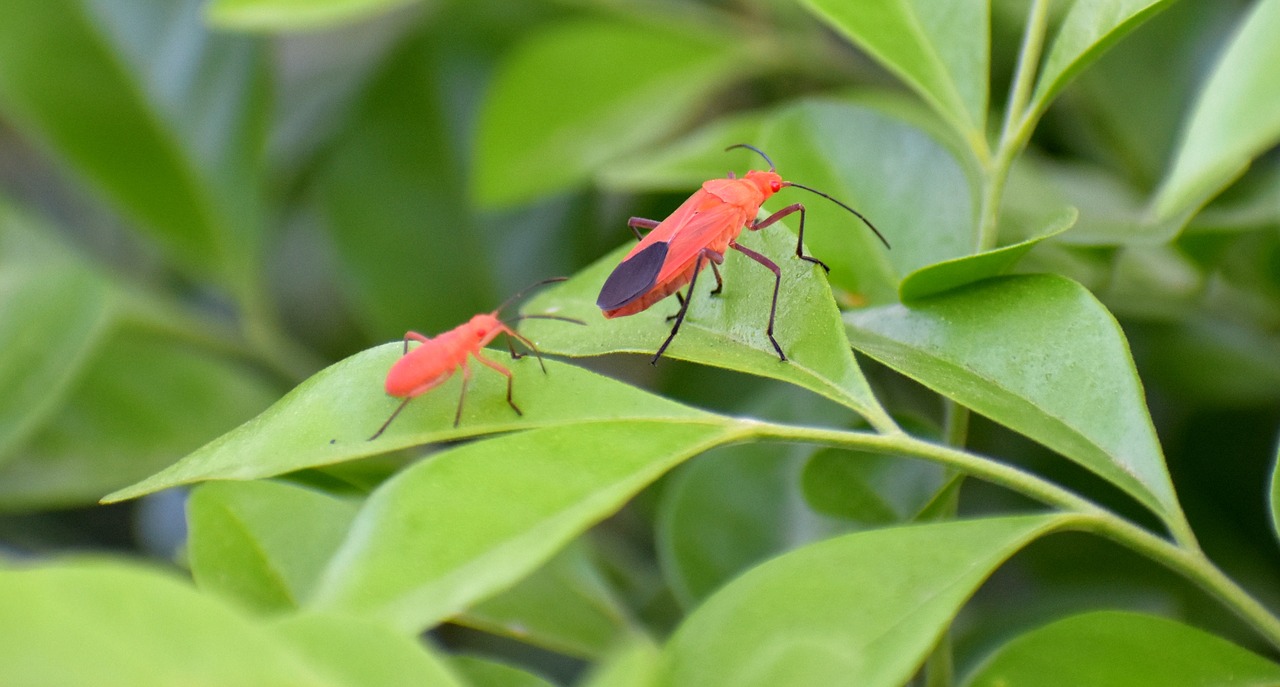
Maple bugs aka boxelder beetles
Nuisance
Boisea trivittatus syn. Leptocoris trivittatus
Late summer and fall are when maplebugs become a nuisance. These bugs breed, live and feed in maples and elder trees. Normally they are not noticeable but come fall you might find them by the dozens (or even hundreds) on the sides of your house, especially in sunnier areas, or trying to get inside your home. The nymphs and the adults are red with a darker marker as seen in the photo.
Fall populations will be more pronounced if the previous summer was hot and dry and the current spring was warm.
Maplebugs are not dangerous to pets or humans, do not transmit disease, and can be handled safely. They do taste awful and may cause vomiting if consumed in quantity. While they are not known to be poisonous, do not allow your pets to eat them.
The maplebugs’ favourite food is the seed of the Manitoba maple or ash tree and, as such, they prefer female trees for feeding and laying eggs. Removal of female trees is sometimes suggested to help with control though given the infrequency and harmless nature of infestation, we do not recommend it. Since maplebugs can fly up to a kilometre (or perhaps significantly more depending on wind conditions) and Manitoba maples are so prevalent across the Prairies, female tree removal is unlikely to be an effective control option regardless.
Maplebugs will also feed on the leaves of maple or ash trees, typically leaving no noticeable feeding injury behind. In severe cases, there may be leaf wrinkling but this is highly unlikely to damage the tree long term. In short, they are a nuisance pest but rarely a damaging one.
They emit an unpleasant odour if you crush or step on them and this scent may attract more maplebugs so the best removal method is to wash swarms off of the offending area with a garden hose. This is an especially effective solution since they are susceptible to drowning and also tend to leave stains from their excrement on surfaces.
Once they get inside a home, active maplebugs only live for a few days to a week and they do not reproduce. Those who have found a cooler hiding spot may go dormant and overwinter, so come spring as it warms up they may begin to wander seeking warmth. In both seasons, they are typically found near sunny windows. Simply physically remove them as you find them.
The best way to manage infestations is prevention:
- Ensure that all cracks and entry points into your house are sealed.
- Repair holes in window screens.
- Use a spray of water to knock them off siding or house walls.
- Remove leaves and other plant debris near the house where they might be nesting.
- Sweep them up and dispose of them in the garbage in a sealed bag.
- Vacuum (a shop vacuum with a few centimetres of water in the bin works great) and suck them up – empty the bin or dispose of the bag.
Sources:
http://www.extension.umn.edu/garden/insects/find/boxelder-bugs/
http://ento.psu.edu/extension/factsheets/boxelder-bug
http://oregonstate.edu/dept/kbrec/boxelder-bug
Scholar search:
The Seasonal Behavior and Ecology of the Boxelder Bug Leptocoris trivittatus in Minnesota

